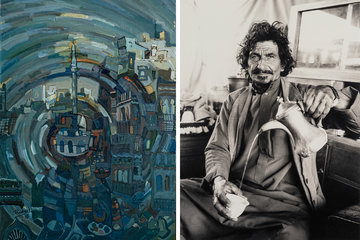
The late Egyptian contemporary artist Menhat Helmy had an exceptionally broad artistic career that included everything from portraying idyllic landscapes of rural life to exploring the mysteries of space.
Born in Cairo in 1925, she was part of a sizable family with seven sisters and two brothers. She passed away in May 2004, leaving behind a legacy that continues to be cherished by her grandson, Karim Zidan, a journalist based in Canada.

Menhat was a scholar who studied in Cairo in the 1940s at the High Institute of Pedagogic Studies for Art. Her journey took a significant turn when she was granted the opportunity to further her education at the prestigious Slade School of Fine Arts in London during the 1950s, where she became only the second Egyptian woman to enroll. Zidan reflects on the significant influence London played in shaping her career, particularly in introducing her to printmaking, an art form that would become synonymous with her name. It was at the Slade School that she crafted her initial etchings, laying the foundation for her future artistic endeavors.

The 1970s marked a period of abstraction for Helmy, epitomized by her 1973 masterpiece, "Space Exploration." Zidan elucidates how her fascination with space and advancements in technology, such as computers, influenced her artistry during this era. Through her work, she sought to meld these modern interests with a profound appreciation for Islamic art, resulting in pieces like "Space Exploration," which can be interpreted as representations of celestial phenomena or the intricate patterns of electronic circuitry.

Today, Helmy's artworks find homes in prestigious institutions such as the Barjeel Art Foundation in the UAE, the Jordan National Gallery of Fine Arts, and the UCL Art Museum in London. Zidan highlights the importance of her avant-garde style and varied body of work, highlighting her position as a trailblazer in the field of contemporary Egyptian art.



























